I purchased my State of Alaska Fishing License online last night, packed a lunch and some rain gear, and headed to lab 3 bright and early to meet up with Mike Kendrick's University of Alabama team. I was looking forward to helping Mike's team catch 100 fish in the Kuparuk River in the name of science.
Some of the trucks used by researchers at Toolik are identified by numbers, but many of the older ones have names like Chester, Bruiser, and Husky. We loaded our gear in "Turtle," an old truck by any standard. Turtle is a true blast from the past and even features a cassette player complete with tapes from Led Zeppelin and M.C. Hammer!
Just a few miles from camp we pulled off the Haul Road and onto a pipeline access road where we parked the truck. We walked under the pipeline and followed the Kuparuk River upstream. Sections of the river have been continuously fertilized every summer since 1983 as part of a long-term study. Phosphorous is added to the river by drip lines that are hung across the river. Today's sampling took place in a section upstream from the first drip line.
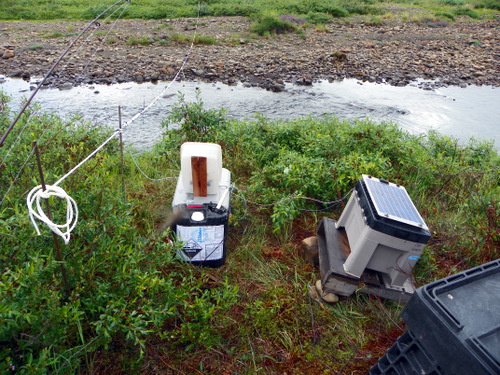
Our first order of business was to trek the river bank to a spot called Monty's Pool. Monty is a large moose that frequents this spot on the river. I was hoping to catch a glimpse of Monty, but sadly he wasn't home. Once at the pool, we pounded four large pieces of rebar into the river bottom. Andrew Miano hung the corners of a square net from each of the four poles and explained that it had to be pounded in securely enough to withstand a flash flood. His guidelines proved to be necessary as the river rose 1.5 feet in an hour later that night, and many fish were still in the pen. I'm pleased to say that they held up well! Now that we had constructed a holding pen, we could begin fishing!
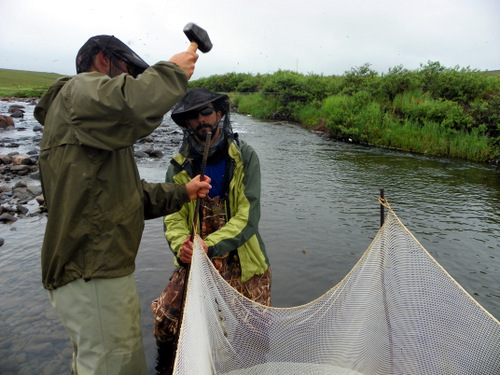
Today we were fishing for Arctic Grayling. Grayling are the only species of fish living in the Kuparuk. The river freezes solid in winter and undergoes a wide fluctuation in temperature throughout the year. Grayling are well-adapted to life in these waters. After about a dozen casts I hooked the first fish of the day. Notice I said hooked and not caught because I made the mistake of trying to land the fish without using a net. It fell off the hook right as I was reaching out to grab it. That's the type of mistake you only make once! A few minutes later Andrew made his first cast, and landed our first fish!
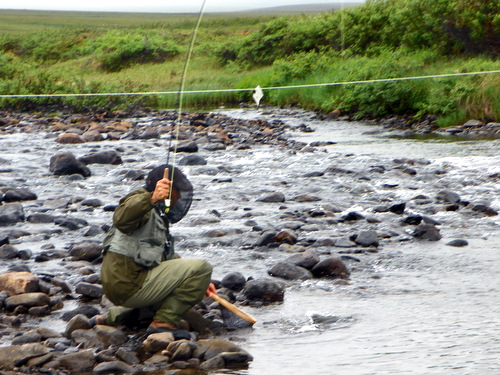
Moving downstream I found a pool that looked promising. I was still feeling bad about dropping the first fish when I got to reel in another one. This time I used my net! Grayling put up an impressive fight and are a beautiful fish. Naturalist E.C. Pielou describes the incredible colors of the grayling as "purple to blue-black on the body, with brilliant red (or sometimes emerald green!) spots on the dorsal fin." The most successful fisherman among us was Greg Hill. My success improved almost immediately after receiving some advice from Greg. He is skilled at reading a river, and explains strategies in terms of how a fish would be thinking. Throughout the day the team caught a total of 75 fish.
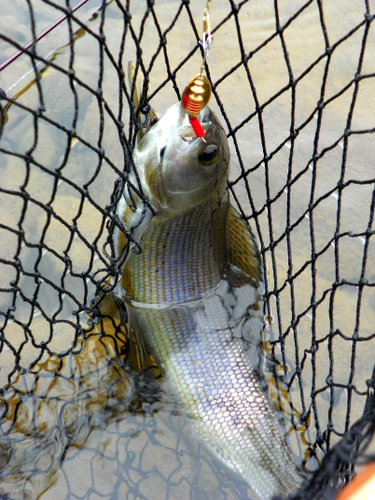
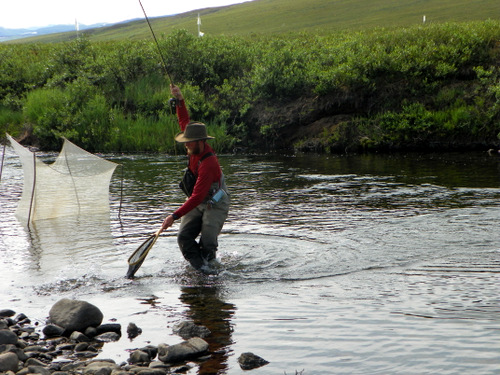
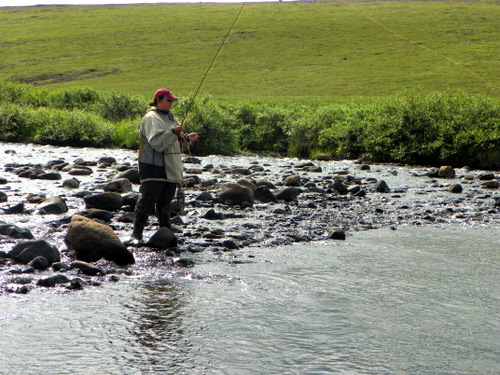
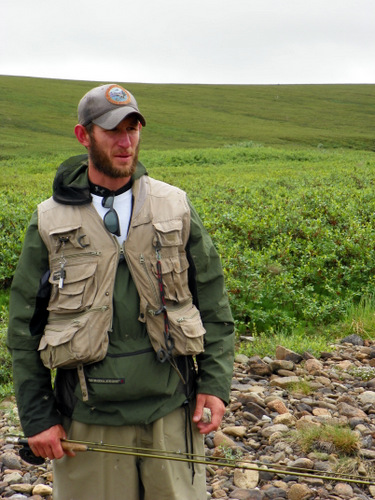
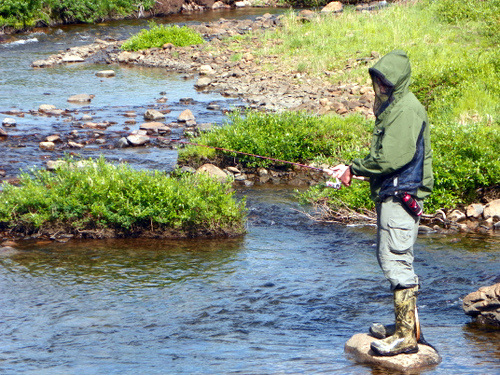
Andrew, Chelsea, and Mike decided to process some fish as we approached 5:00 PM. Mike's study is interested in examining the different feeding habits of fish in various sections of the river. They compare observations between sections of the river that are fertilized vs. sections that are not fertilized. Mike's team examines the invertebrates (fish food) available in each section of river by netting them and by placing sticky traps on strings above the stream to capture flying insects. The process for determining the food choices made by the fish is a little more complicated. Ten of the fish from each sample's 100 are anesthetized so the contents of their stomachs can be flushed out. A capful of a clear solution called Aqui-S is added to a bucket of water. Aqui-S smells a lot like clove oil. The fish are placed in the bucket one at a time and slowly fall asleep. Don't worry, the fish recover in minutes.
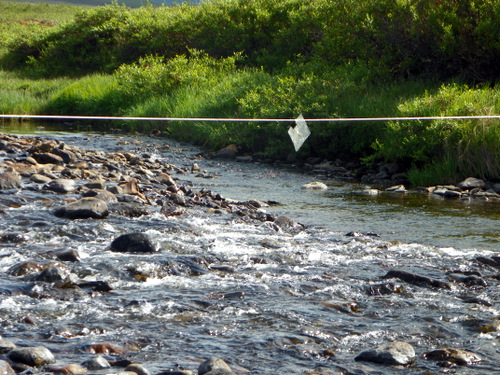
http://youtu.be/NkJPZos-0uk
Once the fish are knocked out, Andrew inserts a modified syringe into their mouth and flushes them out with water to essentially induce vomiting. The team is able to collect and examine exactly what the fish ate. The fluid is filtered and the solids are placed in a baggie for analysis in the lab.
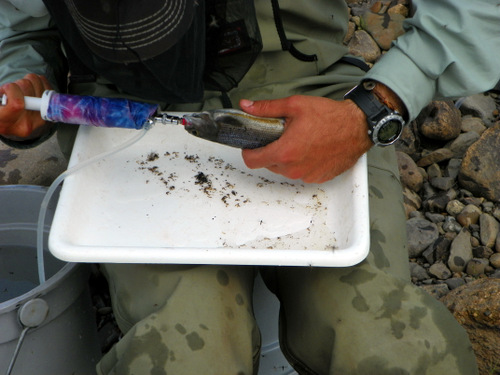
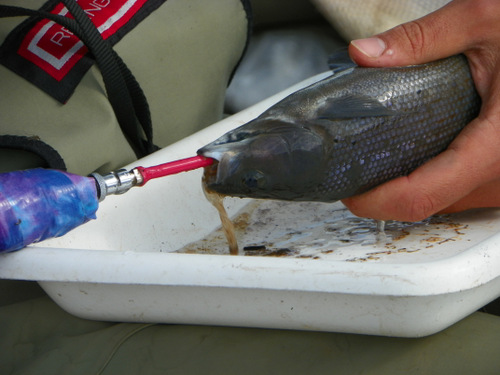
Andrew passes the fish to Chelsea who weighs it, measures it, and grabs a scalpel. She makes a small incision on the belly of the fish and uses a spring-loaded syringe to inject a tag. The tags are essentially the same type of microchip tags that are placed in pets for identification. They use radio-frequency identification technology where the tiny rice-sized microchip is inserted into the fish. A handheld scanner is waived over each fish to detect the presence of the tag and it reads a unique number assigned to each fish. Hospital grade superglue is applied to the incision and the fish is placed in a recovery holding pen in the river. The idea of this study is to track the fish over time, so it is essential that they are returned to the water in the best condition possible. We even cut the barbs off our hooks and take great care to keep the fish healthy. The team will return tomorrow to tag the remaining fish.
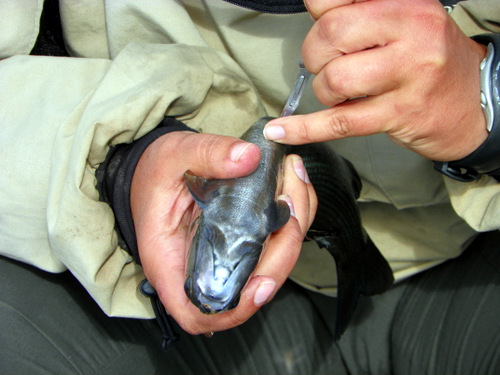
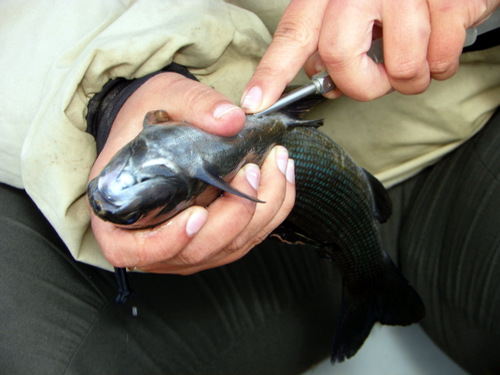
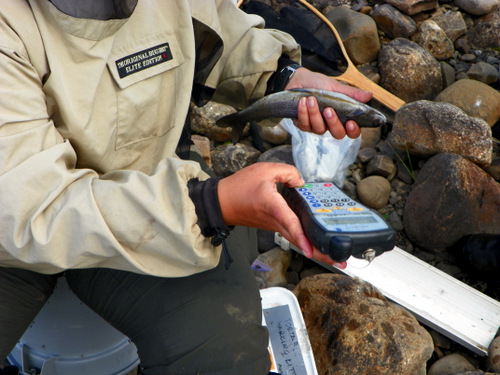
Bug Shirt
The bug shirt that I was originally provided with turned out to be several inches too short on my arms and a bit snug in the shoulders while I was doing field work. The mosquitoes were enjoying a feast on my behalf almost daily. The great folks at CPS, our logistics provider, quickly came through in finding me a better bug shirt in Fairbanks and putting it on a Toolik-bound truck the same day. It felt like Christmas when it showed up last night, and my comfort in the field has increased incredibly! A big thank you to Robbie, Matt, and Marin at CPS!


Comments